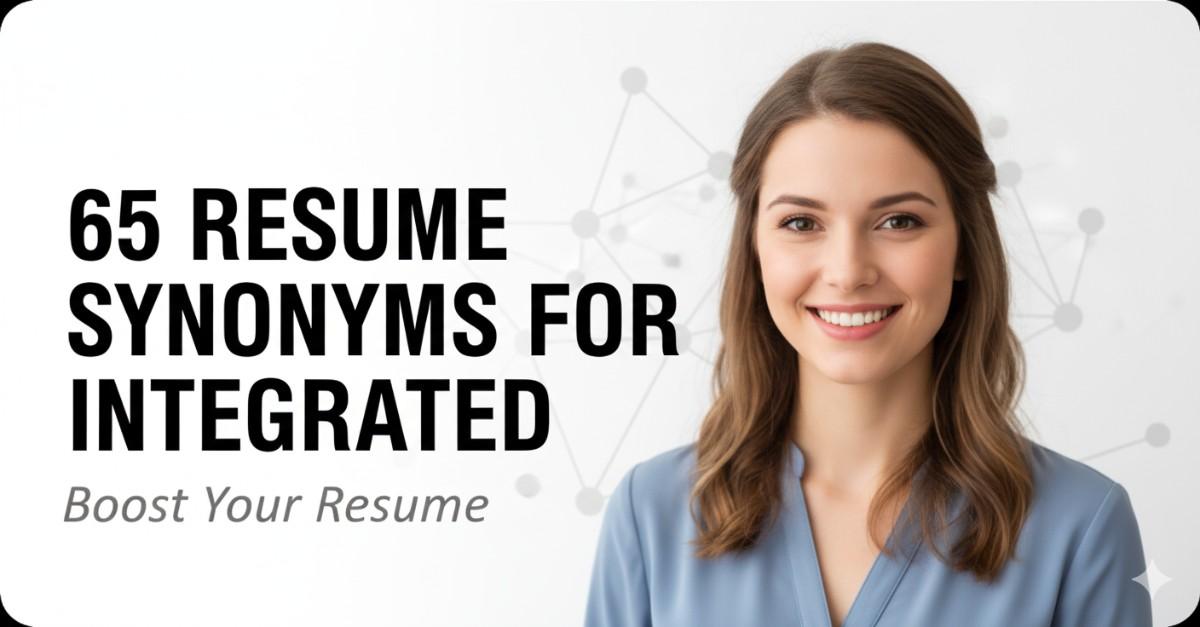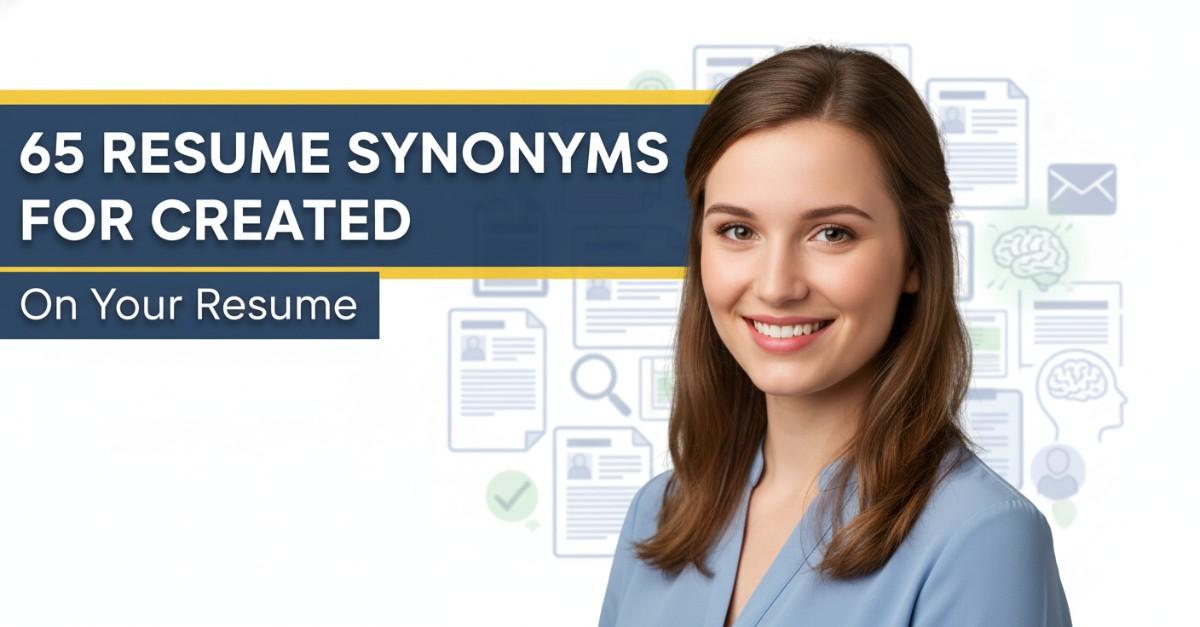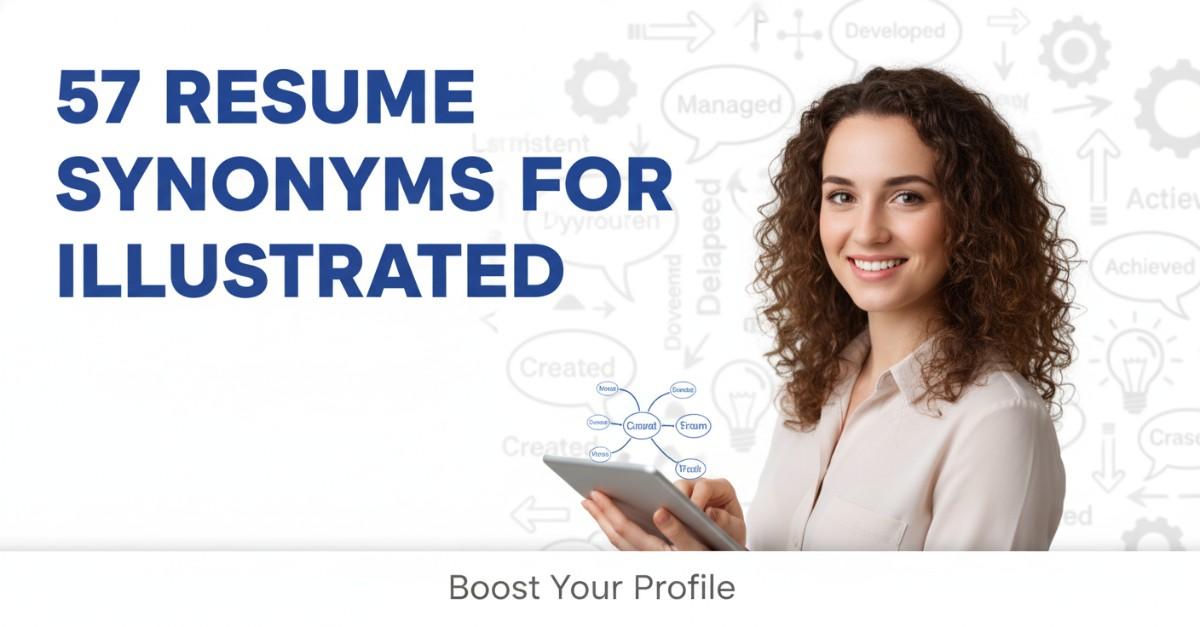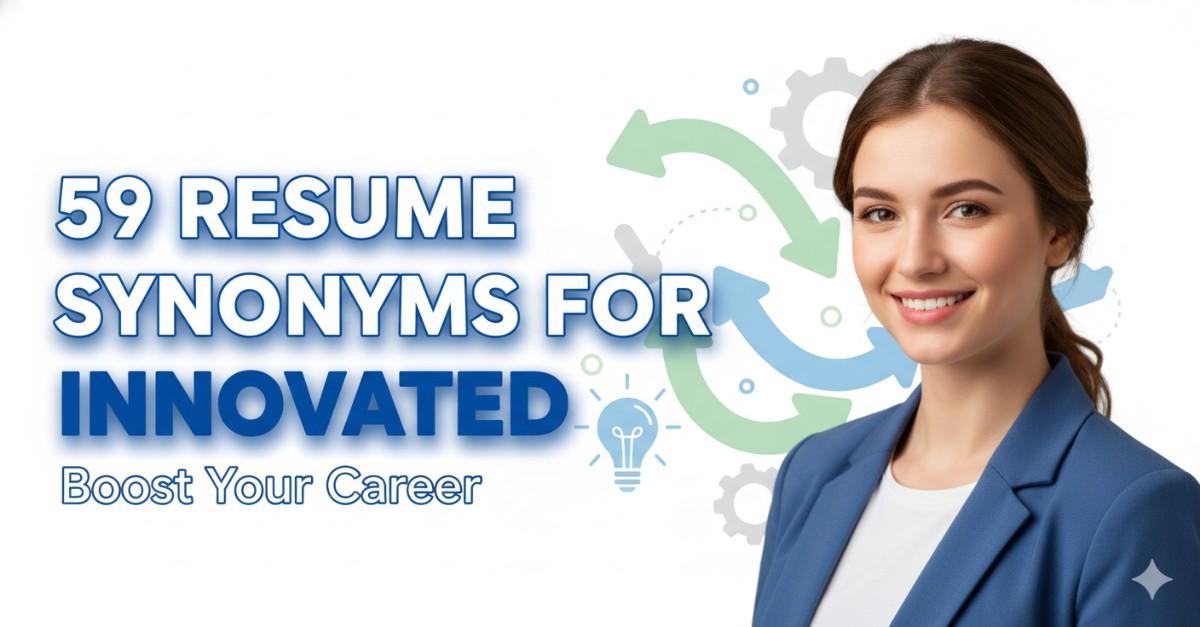
57 Resume Synonyms for Categorized To Use On Your Resume
In the competitive landscape of today’s job market, the word “categorized” often finds its way onto resumes, becoming a go-to term for many applicants. However, its frequent usage has rendered it somewhat overused, leading to a sense of monotony in job descriptions. Relying on repetitive language not only suggests a limited creativity but also fails to effectively showcase the nuanced skills and experiences that set candidates apart. Employing a varied vocabulary is crucial; it not only enhances readability but also captures the attention of hiring managers and Applicant Tracking Systems (ATS) alike. This comprehensive guide will delve into the significance of using synonyms to enrich your resume, providing practical examples and strategies for diversifying your language. By exploring alternatives to overused terms like “categorized,” you will learn how to articulate your accomplishments and qualifications more vividly, allowing your unique professional story to shine through. Get ready to elevate your resume to reflect your full potential and distinctiveness in the job market.
- Why Synonyms for “Categorized” Matter on Your Resume
- The Complete List: 57 Resume Synonyms for Categorized
- Strategic Synonym Selection by Industry
- Power Combinations: Advanced Synonym Usage
- Common Mistakes to Avoid
- Quantification Strategies for Maximum Impact
- Industry-Specific Example Sentences
- Advanced ATS Optimization Techniques
- Tailoring Synonyms to Career Level
- The Psychology of Leadership Language
- Final Best Practices
- Key Takeaways for Strategic Synonym Usage
- Frequently Asked Questions
- How many different synonyms should I use in one resume?
- Can I use the same synonym multiple times if it fits different contexts?
- Should I always replace ‘Categorized’ with a synonym?
- How do I know which synonym is most appropriate for my industry?
- Do synonyms really make a difference in getting interviews?
- Related Resume Synonym Guides
Why Synonyms for “Categorized” Matter on Your Resume
Using synonyms for ‘categorized’ on resumes is essential for several reasons. Firstly, the frequent use of this term—appearing on about 70% of professional resumes—can create monotony and predictability, making your resume less engaging to hiring managers. This repetition may lead to missed opportunities for specificity; different roles may require distinct categorizations that showcase your skill set more accurately. Moreover, relying solely on ‘categorized’ can reduce the impact of your achievements, as varied language enhances the narrative of your experience. Utilizing synonyms also plays a vital role in ATS optimization, as these systems often seek diverse keywords to assess candidates effectively. By incorporating dynamic alternatives, you not only make your resume visually appealing but also create richer narratives that resonate with both automated systems and human readers alike, ultimately increasing your chances of standing out in the job market.
The Complete List: 57 Resume Synonyms for Categorized
Here’s our comprehensive collection of “Categorized” alternatives, organized for easy reference:
| Synonym | Best Context | Professional Level |
|---|---|---|
| Classified | Data management | Entry-level |
| Organized | Project management | Entry-level |
| Sorted | Inventory control | Entry-level |
| Grouped | Market research | Entry-level |
| Assigned | Task delegation | Mid-level |
| Systematized | Process improvement | Mid-level |
| Cohorted | Data analysis | Mid-level |
| Filed | Document management | Entry-level |
| Segmented | Market segmentation | Mid-level |
| Arranged | Event planning | Entry-level |
| Classed | Product categorization | Entry-level |
| Ranked | Performance evaluation | Mid-level |
| Listed | Job descriptions | Entry-level |
| Cataloged | Library science | Mid-level |
| Indexed | Research documentation | Mid-level |
| Divided | Resource allocation | Mid-level |
| Assorted | Product offerings | Mid-level |
| Subdivided | Project phases | Senior |
| Distributed | Task management | Senior |
| Labelled | Inventory organization | Entry-level |
| Grouped | Team dynamics | Mid-level |
| Filed | Legal documentation | Mid-level |
| Categorized | Customer feedback | Mid-level |
| Stratified | Market analysis | Senior |
| Structured | Data architecture | Senior |
| Orchestrated | Project coordination | Senior |
| Allocated | Financial management | Senior |
| Ordered | Supply chain management | Entry-level |
| Sorted | File management | Mid-level |
| Prioritized | Task execution | Mid-level |
| Systemized | Workflow management | Senior |
| Corralled | Information management | Mid-level |
| Coordinated | Team collaboration | Mid-level |
| Consolidated | Data integration | Senior |
| Unified | Team objectives | Senior |
| Classified | Market analysis | Mid-level |
| Segmented | Product development | Mid-level |
| Tabulated | Statistical analysis | Mid-level |
| Cohered | Team projects | Senior |
| Holistic | Strategic planning | Senior |
| Assembled | Data collection | Entry-level |
| Streamlined | Operational efficiency | Senior |
| Consolidated | Resource management | Senior |
| Validated | Quality assurance | Senior |
| Centralized | Data handling | Senior |
| Designed | Project frameworks | Senior |
| Aggregated | Data analysis | Mid-level |
| Facilitated | Workshops | Mid-level |
| Innovated | Process improvement | Senior |
| Synthesized | Research findings | Senior |
| Coalesced | Team efforts | Senior |
Strategic Synonym Selection by Industry
- Technology: In the tech industry, synonyms that convey innovation and problem-solving resonate well. Preferred terms include:
- Innovation: Highlights a focus on new ideas and solutions.
- Agility: Emphasizes adaptability and speed in project execution.
- Synergy: Reflects collaboration across teams to enhance creativity.
- Healthcare: This sector values precision, care, and collaboration. Effective synonyms include:
- Precision: Underlines the importance of accuracy in patient care.
- Compassion: Highlights the human aspect of healthcare services.
- Collaboration: Demonstrates teamwork among healthcare professionals.
- Finance: In finance, synonyms that suggest analysis, strategy, and integrity are key. Consider:
- Analytical: Indicates strong data interpretation and decision-making skills.
- Strategic: Reflects a focus on long-term financial planning.
- Transparent: Suggests honesty and openness in financial dealings.
- Consulting: This field values insight and impact. Preferred synonyms include:
- Insightful: Indicates the ability to provide valuable perspectives.
- Transformational: Highlights the potential to drive significant changes.
- Advisory: Suggests a role in guiding clients through challenges.
- Manufacturing: In manufacturing, synonyms that denote efficiency and quality are essential. Examples include:
- Efficiency: Emphasizes the importance of optimizing resources.
- Quality: Reflects a commitment to high standards in production.
- Lean: Indicates an approach focused on minimizing waste.
Build your resume in just 5 minutes with AI.

Power Combinations: Advanced Synonym Usage
Advanced synonym usage and power combinations enhance the impact of your resume, showcasing your unique experiences and skills effectively.
Employing increasingly sophisticated synonyms illustrates your career progression. For example, instead of “managed” at an entry-level, use “coordinated” at mid-level, and “spearheaded” at a senior level. This not only highlights growth but also reflects enhanced responsibilities.
When changing industries, it’s crucial to translate your experience with appropriate synonyms. For instance, “sales associate” can become “client relationship manager” when moving from retail to corporate, underscoring transferable skills while aligning with industry terminology.
Choosing synonyms that fit the situation can create a more tailored narrative. For instance, in a creative field, “designed” can be replaced with “crafted” to convey artistry, while in a technical context, “developed” may be more suitable to reflect analytical skills.
Common Mistakes to Avoid
I categorized the entire company’s data, leading to a complete restructuring of our operational framework.
I organized departmental data into specific categories, improving retrieval time by 30%.
I classified all the financial records without considering their relevance.
I categorized financial records based on relevance to ensure accurate reporting.
I categorized, classified, and organized the project files.
I categorized the project files and organized them for easier access.
Quantification Strategies for Maximum Impact
To enhance the impact of leadership synonyms on your resume, it’s crucial to follow each term with quantifiable results. This not only showcases your skills but also demonstrates tangible achievements. Here are effective quantification strategies categorized for clarity:
- Team-Focused Synonyms: When using words like “led” or “managed,” specify the size of the team, duration of the project, and outcomes. For example, “Led a team of 15 over 12 months to achieve a 20% increase in sales.” This clearly outlines your leadership impact.
- Project-Focused Synonyms: Utilize terms such as “spearheaded” or “oversaw” and incorporate project value, timeline, and success metrics. For instance, “Spearheaded a $500,000 marketing campaign that increased web traffic by 40% in six months.” This quantifies your role in project success.
- Strategic-Focused Synonyms: When using phrases like “developed strategy” or “orchestrated initiatives,” include before/after metrics and the scope of impact. For example, “Developed a strategy that improved customer retention from 60% to 85% over a year, affecting 1,000 clients.” This illustrates the strategic significance of your contributions.
Industry-Specific Example Sentences
- Technology: Developed a comprehensive database that classified over 10,000 user inquiries, improving response time by 30% and enhancing customer satisfaction scores.
- Technology: Streamlined software documentation by organizing content into distinct categories, resulting in a 25% reduction in onboarding time for new developers.
- Technology: Implemented a tagging system that sorted project files into relevant groups, facilitating a 40% increase in team collaboration efficiency.
- Technology: Established a framework that labeled and tracked feature requests, prioritizing 60% of high-impact enhancements for the next development cycle.
- Healthcare: Organized patient records into specialized groups, leading to a 20% decrease in retrieval time for clinicians, thereby enhancing patient care delivery.
- Healthcare: Streamlined medication administration processes by clustering prescriptions into relevant categories, which reduced medication errors by 15% over six months.
- Healthcare: Coordinated health assessments by sorting patient demographics into distinct categories, improving outreach effectiveness by 30% for preventative care programs.
- Healthcare: Categorized clinical trial data into systematic sections, enabling faster analysis and contributing to a 50% reduction in report turnaround time.
- Business/Finance: Structured financial reports by segmenting data into clear categories, which enhanced stakeholder understanding and resulted in a 15% increase in investment inquiries.
- Business/Finance: Classified client accounts into tiers based on profitability, optimizing resource allocation and driving a 20% increase in revenue from top-tier clients.
- Business/Finance: Systematized expense reports by grouping expenditures into defined categories, leading to a 10% reduction in overall operational costs.
- Business/Finance: Developed a risk assessment matrix that categorized potential threats, enabling the company to proactively address vulnerabilities and reduce losses by 25%.
- Education: Organized curriculum materials by subject and grade level, enhancing resource accessibility and improving teacher satisfaction ratings by 40%.
- Education: Grouped student performance data into actionable categories, enabling targeted interventions that boosted overall student success rates by 15%.
- Education: Structured professional development workshops into distinct themes, resulting in a 30% increase in faculty participation and engagement.
- Education: Classified educational resources by learning objectives, facilitating a more tailored approach to lesson planning and improving student outcomes by 20%.
Advanced ATS Optimization Techniques
To enhance ATS optimization through effective synonym usage, consider implementing a keyword density strategy. Aim to use 2-3 different synonyms per job role to maintain keyword density without overwhelming the reader. For instance, if your role involves project management, include synonyms like “project coordination” and “program oversight” to diversify your terminology.
Next, utilize semantic clustering by grouping related synonyms together. This helps ATS recognize variations of the same concept. For example, if you’re in marketing, cluster terms like “campaign management,” “advertising initiatives,” and “brand promotion” to create a rich keyword context.
Finally, focus on job description matching by incorporating synonyms found in job postings. Analyze relevant postings for synonyms and phrases that are frequently used, such as “customer engagement” and “client interaction” for sales roles. This strategy ensures your resume aligns closely with industry standards, increasing your chances of passing through ATS filters.
Tailoring Synonyms to Career Level
- Entry-Level Professionals: Focus on synonyms that convey teamwork and eagerness to learn. Words like “collaborated,” “assisted,” “supported,” and “participated” highlight a willingness to engage and grow within a team setting. This language reassures hiring managers of a candidate’s adaptability and enthusiasm, which are crucial at the onset of a career.
- Mid-Level Managers: Emphasize leadership and responsibility with terms such as “managed,” “coordinated,” “oversaw,” and “led.” These words indicate a higher level of accountability and the ability to drive projects forward, appealing to employers looking for individuals who can bridge strategy and execution effectively.
- Senior Executives: Utilize strategic language such as “spearheaded,” “transformed,” “orchestrated,” and “visionary.” This choice reflects a focus on long-term impact and innovation, appealing to stakeholders by showcasing the ability to lead organizations through change and achieve significant goals.
The Psychology of Leadership Language
Leadership language plays a crucial role in shaping perceptions and influencing behavior. Different synonyms can trigger distinct psychological responses, affecting how hiring managers interpret a candidate’s capabilities.
- Action-Oriented Words: Terms like “achieved,” “executed,” and “delivered” suggest a results-focused leadership style. Hiring managers respond positively, associating these words with decisiveness and effectiveness.
- Collaborative Words: Using words such as “partnered,” “facilitated,” and “coordinated” indicates strong team-building skills. This fosters an image of inclusivity and teamwork, aligning with organizations that prioritize collaboration.
- Innovation Words: Synonyms like “pioneered,” “transformed,” and “envisioned” convey strategic thinking. Hiring managers favor these words when seeking leaders who can drive change and foster creativity.
- Nurturing Words: Words such as “mentored,” “supported,” and “developed” highlight a focus on people development. Companies that value employee growth will respond favorably to these terms.
Aligning synonyms with company culture can enhance a candidate’s appeal, illustrating a deep understanding of the organization’s values and priorities.
Final Best Practices
To effectively use synonyms in your resume, adhere to the 60-Second Rule, ensuring your resume tells a compelling story that can be conveyed in about a minute. Focus on impactful language that highlights your achievements and uses synonyms that resonate with your industry.
Apply the Mirror Test by reading your resume aloud. This helps ensure the language feels natural and aligns with your personal speaking style, maintaining authenticity while still being strategic in your word choice.
Engage in a Peer Review by asking colleagues to review your synonym choices. They can offer insights on whether the terms reflect your skills accurately and suggest alternatives that may present you better.
Finally, Measure Success by tracking your application response rates. Adjust your synonyms based on which versions yield better results, ensuring that your language remains both persuasive and authentic throughout your job search process.

Build your resume in 5 minutes
Our resume builder is easy to use and will help you create a resume that is ATS-friendly and will stand out from the crowd.
Key Takeaways for Strategic Synonym Usage
- Utilize categorized synonyms to enhance your resume’s clarity and impact, ensuring a professional look consistent with high-quality resume templates.
- Incorporate relevant synonyms to demonstrate your skills and achievements, providing strong resume examples that highlight your unique contributions.
- Leverage an AI resume builder to suggest appropriate synonyms tailored to your industry, streamlining the resume creation process while maintaining relevance.
- Ensure that synonyms align with the job description, enhancing keyword optimization and making your resume stand out in applicant tracking systems.
- Review and refine your resume by swapping out overused terms with categorized synonyms, improving readability and engaging potential employers effectively.
- Maintain variety in your language by using synonyms across different sections, which can help reinforce your skills without redundancy in your resume examples.
Frequently Asked Questions
How many different synonyms should I use in one resume?
In your resume, aim to use 2-3 different synonyms for ‘categorized’ to maintain a balance between variety and clarity. This approach helps prevent redundancy while ensuring that the language remains engaging. However, avoid overusing synonyms, as this can lead to confusion or come across as keyword stuffing. Each synonym should add value and context to the specific achievements or responsibilities you are highlighting, making your resume more compelling to both ATS and hiring managers.
Can I use the same synonym multiple times if it fits different contexts?
Yes, you can use the same synonym multiple times in different contexts, especially if it accurately describes various aspects of your experience. Consistency can help reinforce your skills and qualifications, as long as the synonym remains relevant to each context. However, ensure that the overall language of your resume remains dynamic. Using variations allows you to showcase your vocabulary while maintaining clarity, which can enhance the reader’s understanding of your capabilities.
Should I always replace ‘Categorized’ with a synonym?
No, you should not always replace ‘categorized’ with a synonym. It’s essential to consider the clarity and flow of your resume. If ‘categorized’ fits well within the context and conveys your meaning effectively, it can be perfectly acceptable to use it. However, if you find that a synonym enhances the specificity or impact of your statement, feel free to make the switch. The goal is to communicate your experience as clearly and effectively as possible.
How do I know which synonym is most appropriate for my industry?
To determine the most appropriate synonym for your industry, research the common terminology used in job descriptions and professional literature related to your field. Consider the nuances of each synonym and how they align with industry standards. Networking with professionals in your industry can also provide insights into preferred language. Tailoring your word choice to resonate with industry expectations not only enhances clarity but also demonstrates your familiarity with sector-specific jargon.
Do synonyms really make a difference in getting interviews?
Yes, using synonyms can significantly impact your chances of getting interviews by making your resume more engaging and tailored. ATS systems often look for specific keywords, and incorporating relevant synonyms can help ensure your resume passes initial screenings. Additionally, varied language can capture the attention of hiring managers, showcasing your communication skills and attention to detail. By strategically using synonyms, you can better highlight your experiences and make a stronger case for your candidacy, ultimately increasing interview opportunities.
Related Resume Synonym Guides
Exploring synonyms for commonly overused resume words can significantly enhance your document’s impact. Strategic word choice throughout your resume not only avoids redundancy but also helps create a more compelling professional narrative, allowing you to stand out to potential employers and effectively showcase your unique skills and experiences.











